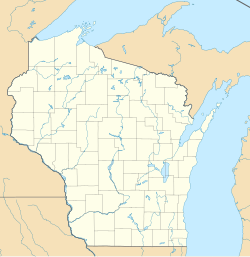History
Francis Hinton (Official number 120754) was built in 1889 by Danish immigrants Jasper Hanson and Hans Scove (collectively known as Hanson & Scove) in Manitowoc for Horatio Truman and George Cooper of Manitowoc. [5] Her wooden hull was 152.16 feet (46.38 m) long, her beam was 30.75 feet (9.37 m) wide, and her hull was 10.66 feet (3.25 m) wide. She had a gross register tonnage of 417.34 tons, and a net register tonnage of 331.07 tons. [1] She was powered by a 385- horsepower (287 kW ) Steeple compound engine that was built by the Manistee Iron Works of Manistee, Michigan, and a single boiler. [2] Her listed capacity was 550.000 board feet (1.29786 m3). She had an Inland Lloyd's rating of A1, and was valued at $35.000 in 1890. [5]
In 1891 the Francis Hinton was sold to the Wisconsin Dredge & Dock Company of Manitowoc. In 1897 the Francis Hinton was sold to James A. Calbick of Chicago, Illinois. In 1899 the Francis Hinton was sold to Ausin A. Canavan of Chicago. In 1902 she was sold to Marine Navigation Company of Marine City, Michigan. [2] On April 18, 1904, the Francis Hinton had her tonnage changed to 397 gross register tons, and 273 net register tons. [1] On August 25, 1905, the Francis Hinton had a collision with the steamer Binghamton near Peche Island in the Detroit River. [2]
Final voyage
On November 16, 1909, the Francis Hinton left Manistique, Michigan, for Chicago, heavily laden with a cargo of lumber. After encountering a gale, her crew discovered that she was taking on water and decided to try and get her to the safety of Two Rivers Harbor. After the water that leaked into her hull extinguished the fire in her boiler, the Francis Hinton was left immobile. [6] Her crew dropped her anchor, but the large waves kept on pounding her hull and letting water in. Eventually, her captain ordered her anchor line cut, and she drifted ashore. The Two Rivers Lifesaving determined that the seas were too rough to attempt to rescue the Francis Hinton's crew. Her crew eventually deployed a yawl and made it to shore safely. Eventually, the Francis Hinton beached in Maritime Bay, about 1.9 miles (3.1 km) northeast of the Manitowoc River. A day after she wrecked, the Francis Hinton's crew, and the lifesaving crew stripped her of everything of value on board. [6]
This page is based on this
Wikipedia article Text is available under the
CC BY-SA 4.0 license; additional terms may apply.
Images, videos and audio are available under their respective licenses.


